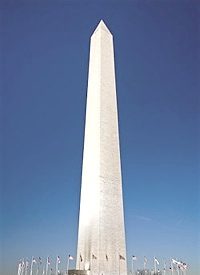
On Tuesday, a remarkable and unexpected event took place in some areas on the East Coast: a 5.8-magnitude earthquake centered northwest of Richmond, Virginia, which caused a stir in cities that do not often encounter such phenomena, including New York and Washington.
As reported by the U.S. Geological Survey, the earthquake was approximately half a mile deep. Shaking was experienced up the East Coast as far as Canada, and in the South East Coast as far down as Georgia. There was even some shaking in Martha’s Vineyard, where President Obama is currently vacationing.
No serious injuries were reported, and very little property damage. However, there was some reported damage to the National Cathedral in Washington, D.C., and early reports that the Washington Monument “may be tilting.” Now, the National Park Service has noted that there is a crack at the top of the monument.
Cellphone service was knocked out after the earthquake, not because of any tower damage, but rather due to overloaded lines, as people called family and friends across the country to discuss the earthquake and confirm that there were no injuries.
Likewise, flights out of the three major New York-area airports were delayed for a short period. At Reagan National Airport outside Washington, D.C., ceiling tiles began to fall as a result of the quake.
Panic struck the Pentagon, The Blaze reports: “People ran into the corridors of the government’s biggest building and as the shaking continued there were shouts of ‘Evacuate! Evacuate!’”
A number of buildings were evacuated along the East Coast, including the state Capitol building in Charleston, West Virginia.
Jennifer Bundy, a spokeswoman for the state Supreme Court in West Virginia, explained, “The whole building shook. You could feel two different shakes. Everybody just kind of came out on their own.”
Just one day before the Virginia quake, southern Colorado and northern New Mexico experienced an earthquake which caused only minimal damages to homes and businesses, and no injuries.
The Blaze notes of yesterday’s event, “Social media site Twitter lit up with reports of the earthquake from people using the site up and down the U.S. eastern seaboard.”
Republican strategist Kevin Madden tweeted, “People pouring out of buildings and onto the sidewalks and Into Farragut Park in downtown DC…” while Arianna Huffington of the Huffington Post tweeted, “did you feel earthquake in ny? It started in Richmond va!”
Meanwhile, when the earthquake hit, two nuclear reactors at the North Anna Power Station in Virginia were immediately taken off line by the safety systems in place.
As noted by the U.S. Geological Survey, the reason the earthquake sent tremors as away as Georgia, Michigan, and even Canada, is because the impact of earthquakes on the East Coast is different from that on the West Coast, where they are more common.U.S. Geological Science earthquake geologist David Schwartz told Live Science: "The crust is different in the east than in the west. It’s older and colder and denser, and as a result, seismic waves travel much farther in the east than in the west." Andy Frassetto of the Incorporated Research Institutions for Seismology told Live Science, “The sediments of the coastal plain along the eastern seaboard can trap waves as they propagate and produce a minor amplification of the shaking.
National Public Radio added:
California is a tectonically active area. The state is situated along the San Andreas Fault, where the North American and Pacific tectonic plates meet.
Virginia sits about smack in the middle of the North American plate, where “intra-plate seismicity” — that is, seismic activity within a plate itself, rather than at a plate boundary — causes the occasional earthquake.
The U.S. Geological Survey notes that earthquakes which occur to the east of the Rocky Mountains are felt over 10 times a longer distance than those to the west. USGS classifies Virginia at a “moderate risk” for earthquakes.
Seismologist Karen Fischer of Brown University indicates that while earthquakes of this magnitude on the East Coast are unusual, they are not unprecedented:
Virginia is not on an active earthquake fault and is roughly in the middle of the North American continental crustal plate, but it has a residual fault scars left over from … when it was an earthquake zone, at the time when the Atlantic Ocean rifted apart from Europe.
There have been approximately 200 earthquakes in the state of Virginia since 1977, reports the USGS. Tuesday’s earthquake is tied with an 1897 quake for the largest ever experienced in the Old Dominion State.




